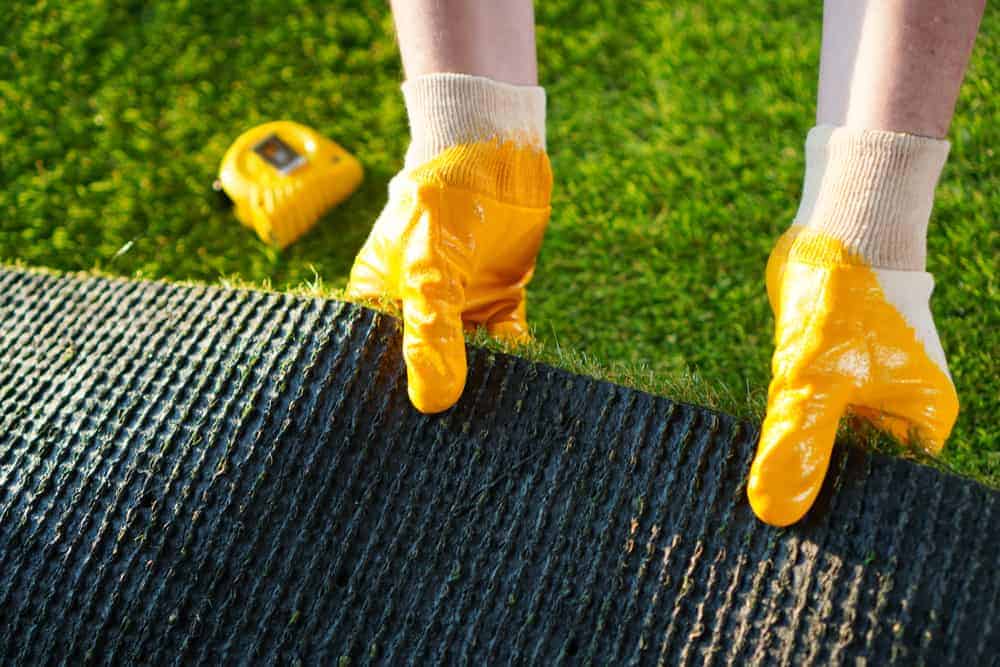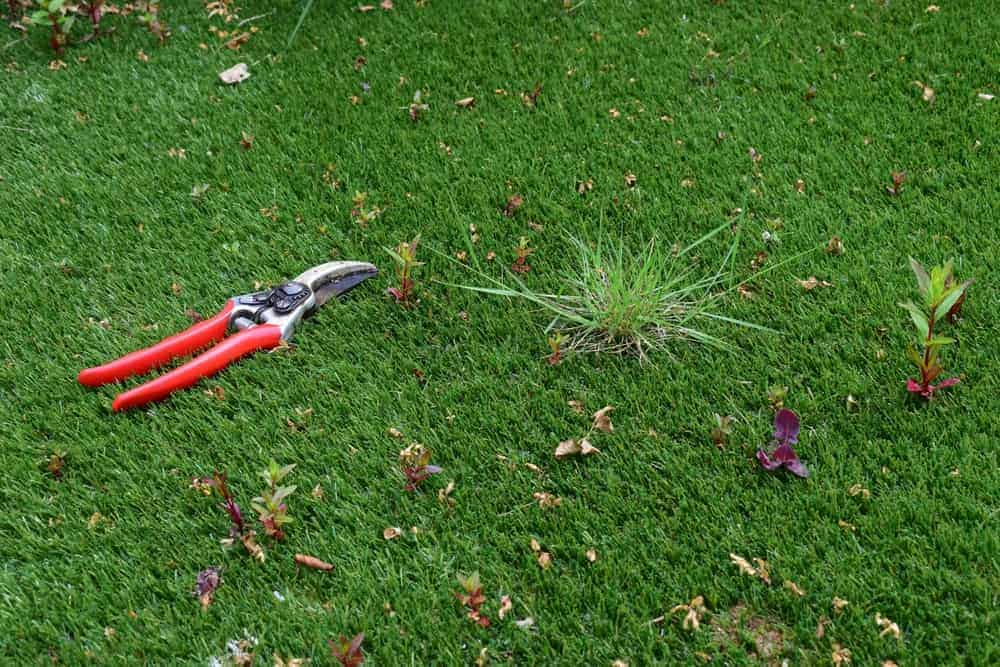4 min read
Last updated: July 5, 2024
Artificial grass has become a popular choice for homeowners and businesses alike, offering a low-maintenance, long-lasting and aesthetically pleasing alternative to natural lawns. However, a common concern among many customers is weed control.
In this comprehensive guide, we will address all your questions about weeds and artificial grass, providing you with the information you need to enjoy a pristine, weed-free artificial lawn.
Introduction to Artificial Grass and Weed Issues
Artificial grass, made from synthetic fibers, is designed to replicate the look and feel of natural grass without the constant upkeep. One of the significant benefits is its resistance to weeds, but this does not mean it’s entirely immune. Weeds can still grow in artificial grass under certain conditions, primarily through the infill, edges, and seams.
Why Do Weeds Grow in Artificial Grass?
- Soil and Organic Debris: Weeds can grow if soil or organic matter accumulates on the surface or beneath the artificial turf. Seeds can take root in this debris.
- Infill Contamination: The infill used in artificial grass can sometimes carry weed seeds, which can sprout if conditions are right.
- Edges and Seams: Improper installation can leave gaps at the edges and seams where weeds can penetrate.

Preventing Weeds in Artificial Grass
- Proper Installation: The key to preventing weeds starts with proper installation. Ensure that a high-quality weed membrane is laid down before the artificial grass is installed. Everything that goes under your fake grass will act as a barrier, preventing weed growth from below.
- Regular Maintenance: Although artificial grass requires less maintenance than natural grass, regular cleaning is essential. Remove debris, leaves, and dirt that can provide a medium for weeds to grow.
- Infill Quality: Use high-quality infill that is less likely to contain weed seeds. Sand infill, for instance, can be less prone to carrying seeds compared to rubber infill.
- Grass quality: Choosing the right artificial grass with superior weed control properties guarantees a pristine, weed-free yard all year round.
Dealing with Weeds in Artificial Grass
- Manual Removal: For isolated weed growth, manual removal can be effective. Ensure you remove the entire weed, including the roots, to prevent regrowth.
- Herbicides: If manual removal is not feasible, consider using a non-toxic, pet-friendly herbicide. Apply as per the manufacturer’s instructions, and avoid using products that could damage the artificial turf such as vinegar.
- Regular Inspections: Periodically inspect your artificial grass for signs of weed growth, particularly after heavy rain or storms which can deposit seeds on the surface.

Frequently Asked Questions
-
What type of weed membrane should be used under artificial grass?
- A high-quality, durable weed membrane or geotextile fabric is recommended. It should be permeable to allow water drainage but dense enough to prevent weed penetration.
-
How often should I clean my artificial grass?
- Regular cleaning should be done monthly, but frequency can increase depending on the amount of debris or organic material accumulating on the surface.
-
Can I use a pressure washer on artificial grass?
- Yes, a pressure washer can be used to clean artificial grass. Ensure the pressure is not too high to avoid damaging the fibers. A gentle wash helps to remove dirt and prevent weed seeds from settling.
-
What should I do if I notice weeds growing at the edges of my artificial grass?
- First, remove the weeds manually or with an appropriate herbicide. Then, inspect the edging to ensure it’s secure and reapply a weed membrane if necessary.
-
How long does a weed membrane last under artificial grass?
- A high-quality weed membrane can last many years, often up to 15-20 years, depending on the quality of the product and the installation.
-
Can pets contribute to weed growth in artificial grass?
- Pets can carry seeds in their fur, which might end up on the grass. Regularly cleaning the fake grass and grooming your pets can help minimise this risk.
-
What should I do if I want to replace my artificial grass?
- When replacing artificial grass, ensure all old infill and debris are thoroughly removed. Install a new weed membrane before laying the new turf to prevent any future weed growth.
-
Is it possible for artificial grass to have zero weeds?
- While it’s challenging to achieve a zero-weed scenario, following proper installation and maintenance practices can significantly reduce the chances of weed growth.
Conclusion
Maintaining a weed-free artificial lawn is achievable with the right practices and knowledge. By ensuring proper installation, regular maintenance, and being vigilant about potential weed growth, you can enjoy a lush, green, and hassle-free artificial lawn. If you have any further questions or need professional assistance, don’t hesitate to reach out to our team of experts.
Related Category: Artificial Grass FAQ
